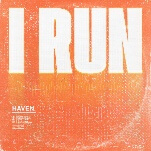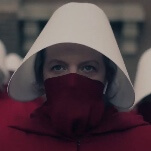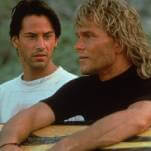Wu-Tang Clan

Pop culture can be as forbidding as it is inviting, particularly in areas that invite geeky obsession: The more devotion a genre or series or subculture inspires, the easier it is for the uninitiated to feel like they’re on the outside looking in. But geeks aren’t born; they’re made. And sometimes it only takes the right starting point to bring newbies into various intimidatingly vast obsessions. Gateways To Geekery is our regular attempt to help those who want to be enthralled, but aren’t sure where to start. Want advice? Suggest future Gateways To Geekery topics by emailing [email protected].
Geek obsession: Wu-Tang Clan
Why it’s daunting: The sheer size and scope of Wu-Tang Clan can be intimidating. There are plenty of great rap groups out there, but only one with nine core members (at the beginning, at least) spawning countless offshoots and all manner of side projects. Wu-Tang Clan isn’t a band, it’s a vast, sprawling universe. During his heyday, producer/rapper/leader RZA was legendary for his perfectionist tendencies and the quality control he brought to every Wu-Tang solo album. Then, after his mid-’90s golden era, RZA was notorious for his complete lack of quality control. He was seemingly willing to lend the Wu insignia to every half-assed album tangentially related to the group. (Check out this Wikipedia page for a semi-complete list of every half-assed act associated with the legendary collective.) Along with a few big names like Redman, that list contains plenty of small-timers mired in well-earned obscurity. Seriously: T.H.U.G. Angels? Popa Wu? Northstar? Factor in a plethora of Wu-Tang compilations of greatly variable quality, and it’s easy to see why casual fans might not know where to begin.
Possible gateway: Enter The Wu-Tang (36 Chambers)
Why: Why not begin with the very beginning, with 1993’s revolutionary Enter The Wu-Tang (36 Chambers)? Robert Diggs made his recording debut with a misguided single released under the name Prince Rakeem (“Ooh I Love You Rakeem”) equally inspired by Biz Markie and LL Cool J. He then reinvented himself as Wu-Tang Clan producer/guru RZA, the mastermind behind an epic new group that synthesized a galaxy of geek obsessions—Five Percent ideology, soul records from the ’60s and ’70s, kung-fu movies, Supreme Mathematics, blaxploitation, pulp crime novels—into a thrilling new conception of what a hip-hop group could be.
Wu-Tang Clan arrived with an elaborate mythology that posited its Staten Island home base as New York’s answer to the Shaolin Temple—a monastery famed for its connection to martial arts—and its members as a new breed of lyrical warriors. The talent on display was staggering: There was Method Man’s leading-man charisma; Ol’ Dirty Bastard’s comic-relief lunacy and off-key crooning; GZA’s ice-cold, methodical monotone flow; Raekwon and Ghostface Killah’s dense, tag-teamed crime narratives; and the mad-prophet ambition and abstraction of RZA, who produced tracks that changed the sound of hip-hop and rapped like John Travolta in the midst of a debilitating stroke.
Given the group’s sprawling, messy nature and RZA’s original vision, Enter The Wu-Tang’s tightness and cohesion qualify as a minor miracle. The group’s instant-classic debut offered socially conscious commentary on drugs, greed, and desperation (“C.R.E.A.M.”); head-snapping aggression (“Bring Da Ruckus”); anthem after anthem (the solo showcase “Method Man,” “Wu-Tang Clan Ain’t Nuthing Ta F’ Wit”); and soulful, melancholy, back-in-the-day nostalgia (“Can It All Be So Simple”). Enter The Wu-Tang sounds refreshingly dirty and raw, a patchwork collage of ideas, sounds, styles, and influences.








































